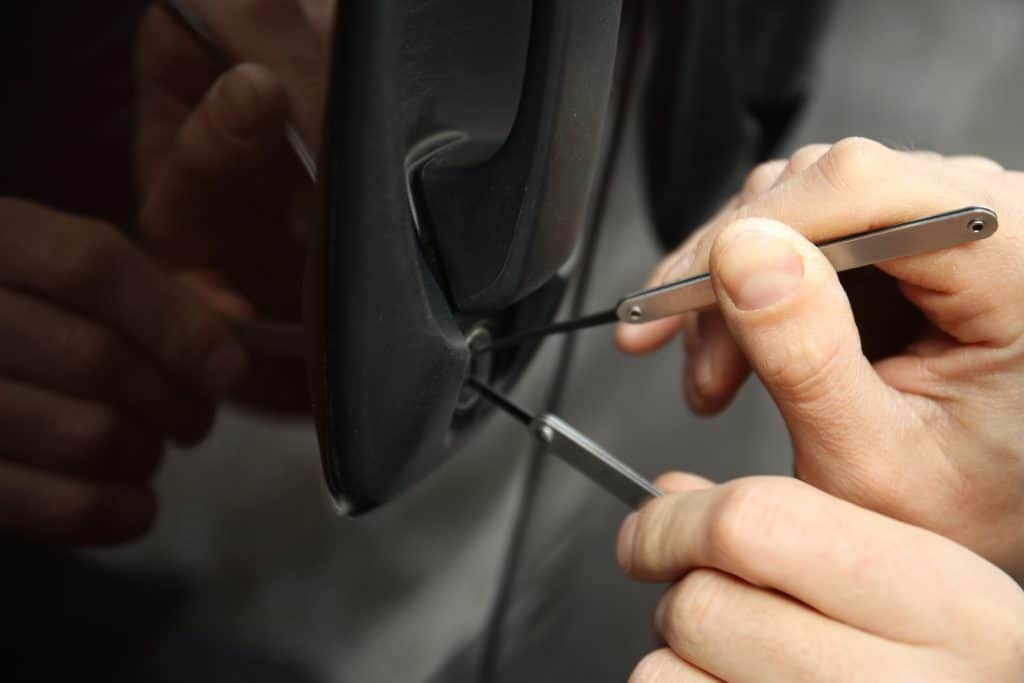We know the frustration that comes when a freshly programmed key refuses to work in a car. The key looks right, feels right, and even goes into the ignition or starts the push-button system, but the vehicle simply will not accept it. Many drivers assume the programming failed, but the issue is often more complex. Cars today use layers of electronic checks that make programming errors and rejections fairly common. Understanding why this happens and how to correct it can save time, stress, and money.
How Modern Key Programming Works
Modern vehicles rely on electronic communication between the key and the car’s immobilizer system. Inside each key is a transponder chip, which sends a unique signal when placed near the ignition or inside the car. The immobilizer control unit verifies that the signal matches what is stored in the system. If the code does not match, the vehicle blocks the start sequence.
This process goes beyond simply cutting a key to fit the lock. Even if the blade or fob physically fits, the electronic handshake must occur. That is why a new key can be rejected even after successful programming attempts. Our team often explains to drivers that every key essentially becomes part of a digital security conversation between the car and its onboard computer. If one side of the conversation is off, the car refuses to start.
Common Causes of Key Rejection
One common reason cars reject newly programmed keys is mismatched codes. If the key was not programmed to the exact specifications of the immobilizer, the system will not recognize it. Another cause is interference from a weak battery in the fob. Without proper power, the transponder may fail to send the correct signal.
Cars can also reject keys due to incorrect or incomplete programming steps. Some models require multiple cycles, such as turning the ignition on and off several times, while others require two working keys already programmed. Skipping any step can cause rejection. In rare cases, the problem lies not with the key but with the immobilizer unit itself. Damage, corrosion, or software glitches in the control module may cause it to misread signals.
Vehicle-Specific Programming Challenges
Every car manufacturer designs its own security system, which means the process is not universal. Some brands allow quick programming through the dashboard menu, while others demand specialized diagnostic tools. Certain luxury vehicles use rolling codes that change each time the car starts. In these cases, generic programming devices may not keep up with the sequence, leading to rejection.
Even among the same brand, different years and models can require completely different steps. For example, one model may allow programming through the ignition, while another needs connection through the OBD port. Our team has seen situations where drivers order a replacement key online, only to discover that their car’s security system requires dealership-level software. This variety makes key rejection one of the most common issues drivers encounter when attempting do-it-yourself programming.
The Role of Immobilizer Systems
Immobilizer systems are designed to stop theft, and they often succeed by being strict. They can detect cloned or poorly programmed keys quickly. Some systems automatically lock down after repeated failed attempts, making it even harder to introduce a new key.
These systems often require synchronization not just with the key but also with other components, such as the steering column lock, ECU, and body control module. If any part of the system fails to align, the car will treat the new key as an intruder. Understanding how tightly linked these systems are helps explain why rejection happens so often.
Signs That Programming Failed
Drivers sometimes wonder if the problem is the car rejecting the key or something else. Clear signs of rejection include the security light flashing on the dashboard, the engine cranking without starting, or the car not responding to the fob’s unlock commands. In some cases, the vehicle might start briefly and then shut off as the system recognizes the mismatch.
It is important to note that mechanical issues such as a dead car battery or faulty starter can mimic these symptoms. That is why checking the security system first is wise. If multiple keys fail, the problem likely lies with the immobilizer, not the keys themselves.
Troubleshooting Steps at Home
Before reaching for advanced solutions, there are a few simple steps we recommend. First, replace the battery in the new fob. Many rejections happen because of low voltage during signal transmission. Second, ensure the car’s main battery is fully charged, as immobilizers rely on steady power.
Next, follow the exact programming procedure outlined in the owner’s manual. Small variations in timing can make a big difference. If the process requires two working keys, make sure both are present and fully functional. Sometimes clearing previous codes from the system is necessary before adding new ones, and this step can be missed easily.
When Professional Tools Are Needed
There comes a point when do-it-yourself methods stop working. Many vehicles require dealer-grade or locksmith-level programming tools to pair a new key properly. These devices connect directly to the car’s computer system, allowing deeper access than consumer options.
Professional tools can reset immobilizer codes, re-sync rolling code systems, and ensure that every module communicates correctly. Our team often uses these tools to bypass security locks that prevent new programming after repeated failed attempts. For most modern vehicles, this level of precision is necessary to stop the cycle of key rejection.
For drivers who want expert assistance, contacting a trusted automotive locksmith ensures that the right equipment and knowledge are applied to the problem. This option prevents unnecessary time spent troubleshooting and reduces the risk of damaging sensitive electronic systems.
Avoiding Rejection in the Future
Once a new key works, the next step is keeping it that way. Always store keys away from extreme heat and moisture, which can damage the chip. Avoid dropping them, as shock can break the transponder inside. Replace the fob battery once a year to ensure reliable communication.
It is also smart to keep at least two working keys at all times. Many vehicles require an existing key for successful programming of a new one. Losing all keys makes the process far more complex and expensive. We recommend programming a spare as soon as possible after getting a replacement.
Extra Tip: Software Updates Matter
A little-known factor in key rejection is outdated vehicle software. Some manufacturers release updates for the immobilizer and ECU that improve compatibility with replacement keys. If programming repeatedly fails, checking for software updates at a service center can sometimes solve the issue.
In certain vehicles, immobilizer firmware may contain bugs that misread transponder signals. Updating the software resets these errors and allows the car to accept new keys more reliably. This is a step many drivers overlook but can be a practical fix.
Professional Help for Complex Issues
Even with the best preparation, there are situations where the cause of rejection is buried deep in the vehicle’s electronics. Faulty antennas that read transponder signals, damaged body control modules, or corrupted immobilizer memory can all be culprits. These cases require diagnostic equipment that goes beyond simple key programming.
When we face these challenges, we approach them systematically. First, we confirm whether the key itself is correct for the vehicle. Next, we test the immobilizer communication circuits. Finally, we use programming software to check for stored error codes. Only by working through each step can we identify the true cause of rejection.
If drivers run into this level of difficulty, the fastest solution is arranging professional service. Reaching out through contact our team allows us to provide a direct fix without the trial-and-error approach that wastes time.
FAQ
Why does my car start and then immediately stall with a new key?
This usually means the immobilizer system detects the key as incorrect. The car may allow a brief start before shutting down for security reasons.
Can a weak car battery cause key programming to fail?
Yes, low voltage can interrupt the communication between the key and the immobilizer. Ensuring a healthy battery often helps avoid rejection.
Is it possible to program a key without the original?
In many cases yes, but the process is more complex. Some vehicles require access to special codes or dealer-level tools when no working key is present.
Why does the security light keep flashing after programming?
A flashing security light often signals that the car still does not recognize the new key. Reprogramming or professional tools may be necessary.
Should I keep more than one working key at all times?
Absolutely. Having at least two functional keys ensures easier programming in the future and avoids major costs if one is lost.

